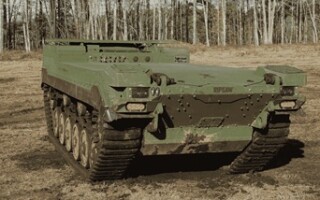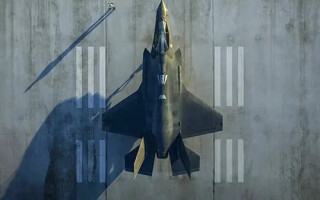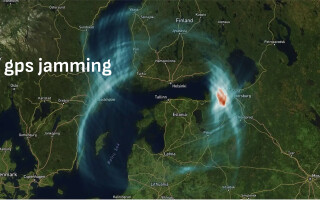GUEST BLOG: RF interconnects and military performance
BlogMay 09, 2025

Modern military platforms demand increasingly sophisticated radio-frequency (RF) interconnect solutions that can perform reliably in the most challenging environments while meeting strict size, weight, and power (SWaP) requirements. Decades of development across the RF industry have led to considerable innovation in supporting these mission-critical applications.
Modern military aircraft present some of the most demanding requirements for RF interconnect solutions. From advanced fighter jets like the F-35 to transport aircraft such as the C-17 and A-400M, each platform presents unique challenges that require specialized solutions.
Electronic warfare (EW) systems are one of the most critical applications in modern military aircraft. In these systems, high-performance cable assemblies must deliver high levels of phase stability and low insertion loss. Modern lightweight solutions have become foundational components in legacy programs like the F-15 and next-generation platforms.
Advanced radar applications need to rely on superior phase stability across wide temperature ranges. Revolutionary developments in fluoropolymer foam technology have ensured consistent radar accuracy across all flight conditions. This advancement has proven particularly valuable in advanced fighter aircraft in which precise radar performance is essential for mission success.
The proliferation of communication systems in modern military airframes has created new challenges in antenna interconnection. Contemporary platforms often require dozens of separate antenna systems, each demanding reliable RF connectivity. Advanced multiport solutions have emerged to reduce installation complexity while ensuring reliable performance in high-vibration environments.
Rotary-wing applications
Helicopter platforms present particularly challenging vibration environments while requiring exceptional reliability. The extreme vibration conditions common in rotary-wing applications – for example, in attack helicopters like the AH-64 Apache to heavy-lift platforms like the CH-53 – require specialized connector solutions with advanced locking mechanisms to prevent de-mating under severe conditions.
Environmental sealing represents a critical design priority for rotary-wing applications, where platforms must perform reliably in environments ranging from desert heat to maritime salt spray. Advanced sealing technologies protect RF systems against these harsh conditions, maintaining optimal performance across all operational scenarios.
In addition, maintenance efficiency is critical for rotary-wing platforms, in which operational readiness can directly impact mission success. Quick-disconnect solutions and replaceable front-end connectors streamline routine maintenance procedures while maintaining the robust, reliable connections essential for mission-critical systems, thereby reducing aircraft downtime and maintenance complexity since the entire assembly doesn’t need to be replaced if damaged.
Outside-the-box solutions
As military systems become more sophisticated, the density of RF interconnections continues to increase while available space decreases. Multiport and miniport solutions address these challenges head-on:
- Multiple coaxial contacts integrated into a single connector module for reduced installation complexity
- High-frequency performance up to 20 GHz for multiport connectors and 40 GHz for mini-multiport connectors
- Single-point mounting to reduce installation time while ensuring proper alignment
- Integrated environmental sealing to prevent moisture and contaminant ingress
Inside-the-box solutions
Internal RF routing in compact, high-performance systems, such as those found in modern military applications, requires specialized solutions that can meet tight space constraints, environmental challenges, and demanding performance criteria.
Flexible assemblies offer space savings, as they can achieve tight bend radii directly behind connectors, minimizing footprint; maintain excellent phase stability even with flexure; an array of sizes; and broad compatibility with varied connector types. Additionally, features like vapor sealing can boost environmental reliability, with protection against moisture and altitude-related challenges.
A holistic approach to RF interconnect design – one that considers the entire signal path from antenna to system components – is critical to ensuring optimal performance in modern military systems. Leading RF solution providers conduct comprehensive system-level analyses to develop application-specific solutions and provide support throughout the design, installation, and maintenance process. Companies providing high-performance interconnect tailored to the demands of mission-critical environments must have a deep understanding of military requirements and a long track record of RF engineering innovation.






